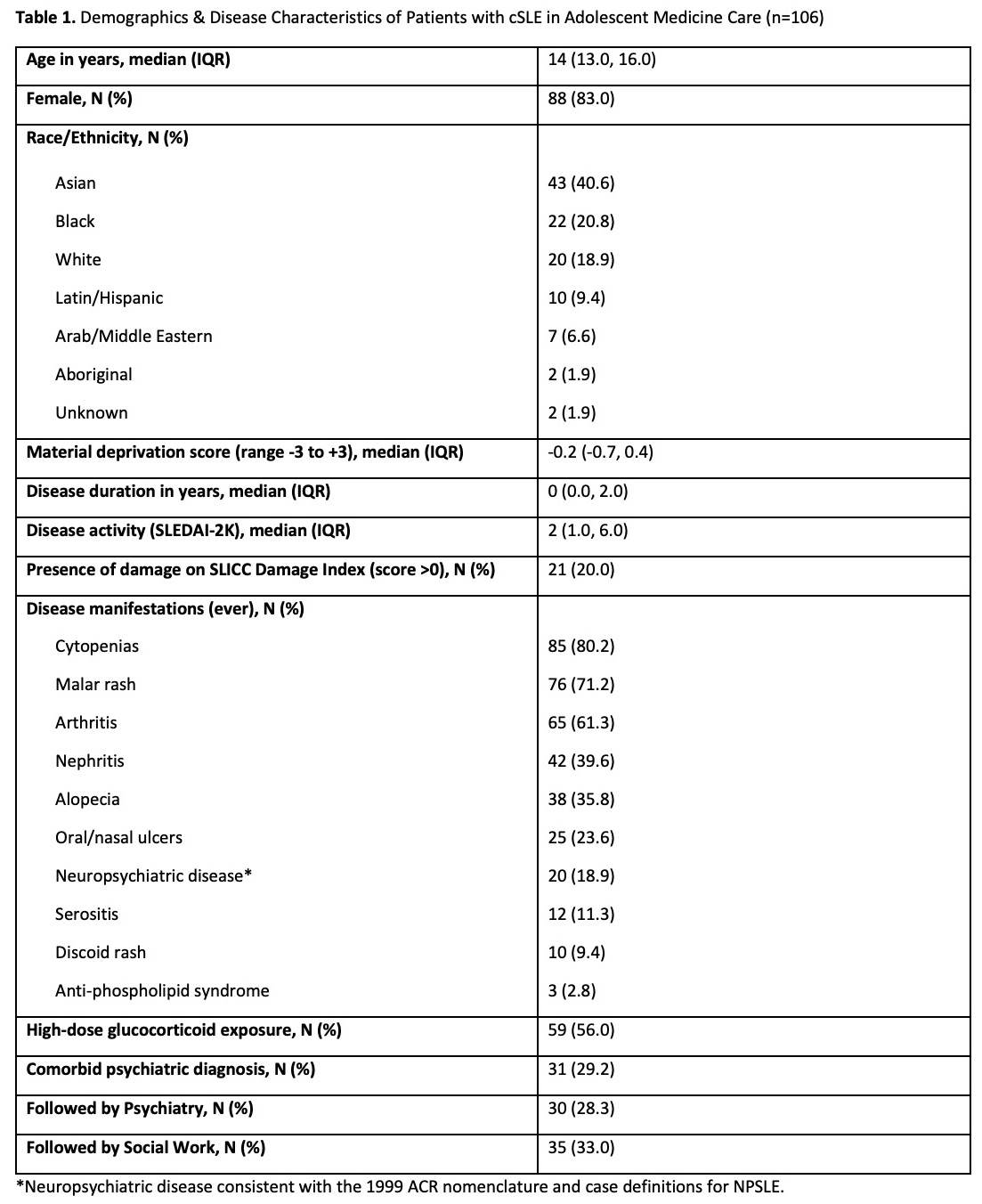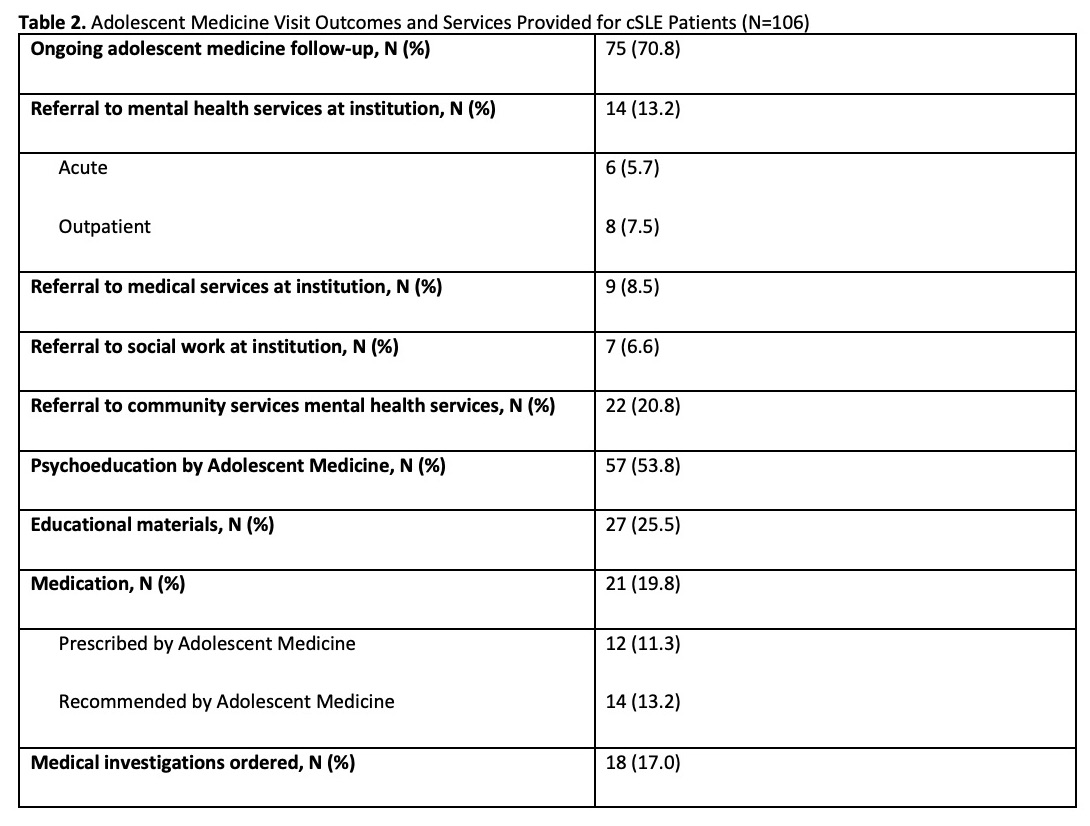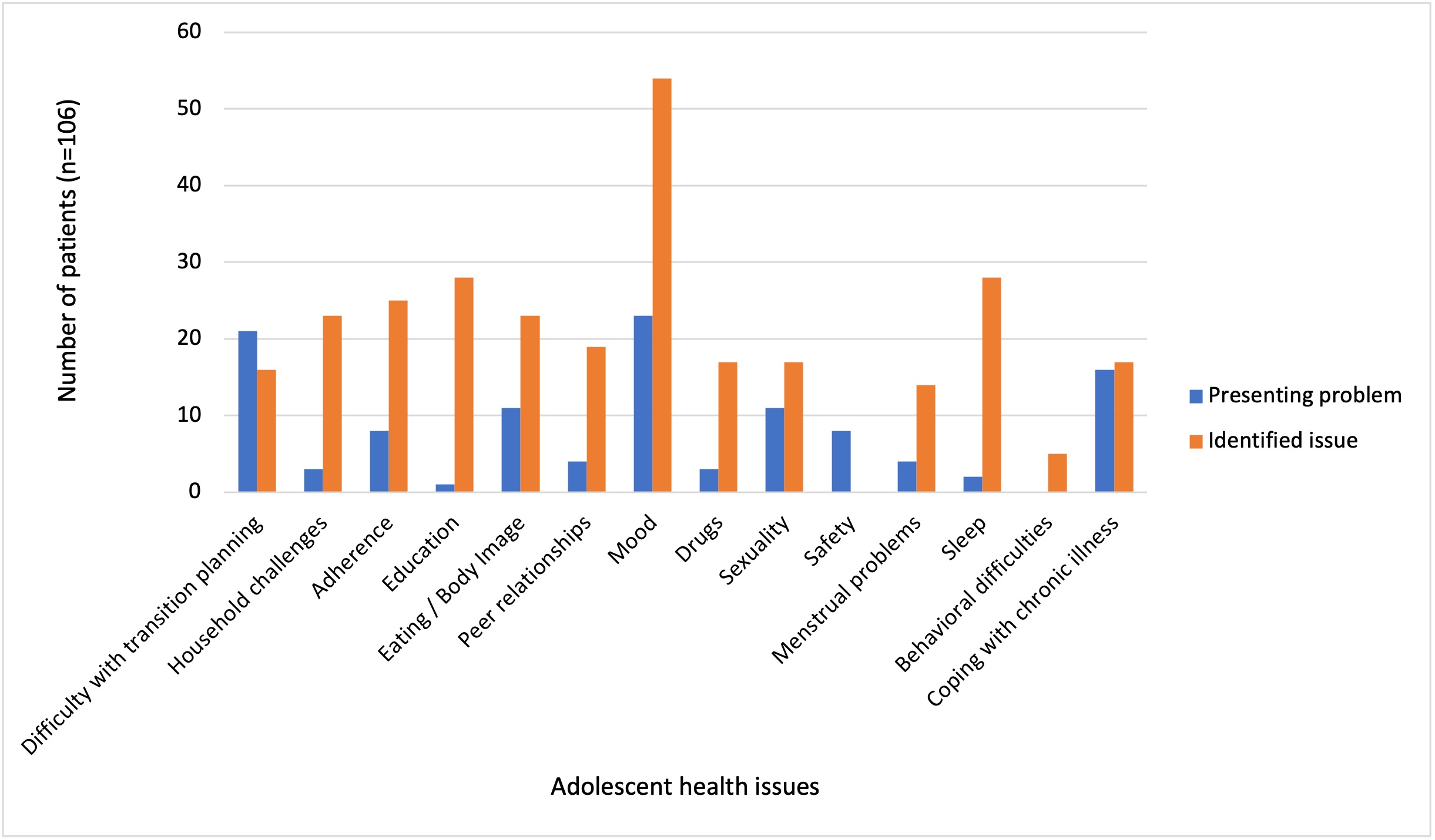Session Information
Date: Sunday, November 7, 2021
Title: Pediatric Rheumatology – Clinical Poster II: SLE, JDM, & Juvenile Scleroderma (0764–0785)
Session Type: Poster Session B
Session Time: 8:30AM-10:30AM
Background/Purpose: Childhood-onset systemic lupus erythematosus (cSLE), with typical onset in adolescence, is a chronic life-threatening disease. In addition to dealing with cSLE, these adolescents endure the unique psychosocial and physical health challenges of this life stage. We aimed to characterize the burden of adolescent health issues faced by patients with cSLE, as well as demographic and disease characteristics associated with adverse adolescent health.
Methods: We conducted a retrospective cohort study of adolescents age 12-18 years with cSLE (meeting ACR and SLICC classification criteria) who were seen by Adolescent Medicine (AM) specialists in the Lupus Clinic at SickKids Hospital, between July 2018-July 2020. As part of our cSLE care model, patients presenting with adolescent health issues were routinely seen by AM in the clinic. Adolescent health issues were characterized using the HEADDSS framework (Home, Education/employment, peer group Activities, Drugs, Sexuality, and Suicide/depression), which was standardly recorded for all AM visits. Issues were classified as presenting and/or identified problems at each visit. Adolescent health burden was tabulated as the number of individual adolescent issues identified per patient. Multiple Poisson regression was used to examine associated patient factors, including age, gender, material deprivation score (measure of social marginalization that accounts for income, housing quality, educational attainment, and family structure), SLE disease activity and damage indices, and high-dose glucocorticoid exposure ( >3 months and any-time dose of >30mg prednisone equivalent).
Results: 226 adolescents with cSLE were seen in the Lupus Clinic during the observation period, of which 106 (47%) were seen by AM. Of these, 88 (83%) were female. Median age at first visit was 14 years (IQR 13, 16). Additional patient characteristics are shown in Table 1. Patients had a median of 2 (1, 3) visits with AM over the study period. Figure 1 shows the range of adolescent health issues described across all visits, of which mood was identified as the top adolescent issue (presenting problem in 22%, and identified issue in 51% of patients). Patients had an average adolescent health burden of 2.8 ± 2.31, defined as the number of separate adolescent health issues identified over the study period. In multiple regression analyses, higher adolescent issue burden was associated with higher glucocorticoid exposure (RR=1.72, 95% CI 1.32-2.24), presence of damage (RR=1.30, 95% CI 1.30, 95% CI 0.99-1.70), higher material deprivation (RR=1.16, CI 1.03-1.29), and lower disease activity (RR=0.96, 95% CI 0.92-0.99). The most common service provided by AM was psychoeducation at 54% (Table 2).
Conclusion: Adolescents with cSLE experience a wide range of physical, emotional, and social issues in addition to their underlying disease. We found that increased cSLE disease severity and social marginalization put teens at higher risk of worse adolescent health issues. This highlights the need to discuss adolescent health during rheumatology clinic visits, and the importance of integrating AM specialists into routine cSLE care.
To cite this abstract in AMA style:
DeCoste C, Moaf P, Ng L, Ostojic-Aitkens D, Faruq F, Maguire B, Levy D, Hiraki L, Toulany A, Knight A. High Adolescent Health Needs and Relationship to Disease in Patients with Childhood-Onset Systemic Lupus Erythematosus [abstract]. Arthritis Rheumatol. 2021; 73 (suppl 9). https://acrabstracts.org/abstract/high-adolescent-health-needs-and-relationship-to-disease-in-patients-with-childhood-onset-systemic-lupus-erythematosus/. Accessed .« Back to ACR Convergence 2021
ACR Meeting Abstracts - https://acrabstracts.org/abstract/high-adolescent-health-needs-and-relationship-to-disease-in-patients-with-childhood-onset-systemic-lupus-erythematosus/



